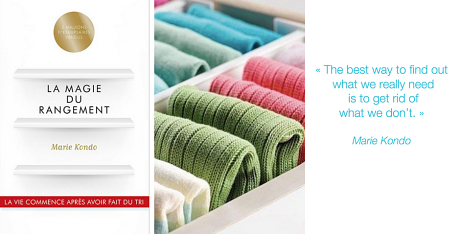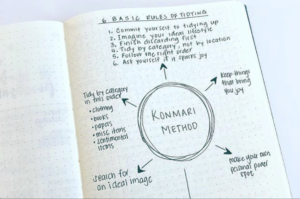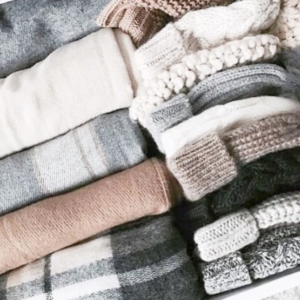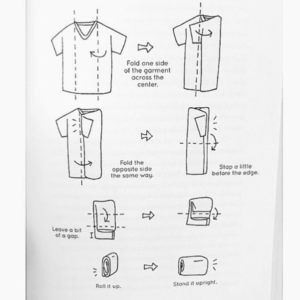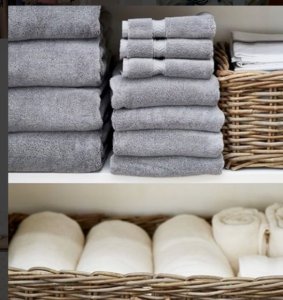Home Detox, or the Magic of Tidying Up: The Marie Kondo Method
I read Marie Kondo’s book when it came out in 2015 and tried out her method. It totally worked! These decluttering principles from Japanese professional organizer Kondo also function as a sort of mental detox. It’s actually true: you do feel lighter and freer with a tidy home. Since spring is just around the corner, Le Colibry thought now would be the perfect time to share some of Kondo’s practical organizing tips.
How Do I Use the KonMari Method?
It all begins with awareness and desire. Marie Kondo’s method is revolutionary, precise, and radical; success is 90% dependent on your mindset. The book also contains tips for maximizing space and a way to keep yourself on track with the tidying process, all stemming from the fundamental principle that decluttering is good for your health.
And don’t try to declutter your whole house in one go: it could lead to a rebound effect. Just like with dieting, you could make major improvements only to fall back into old habits.
The Main Idea: Don’t Just Tidy Up, Discard
“Tidying in the end is just a physical act: you decide whether or not to dispose of something, and you decide where to put it if you keep it.” Start by discarding things you don’t want anymore… keeping a few rules in mind.
Rule 1: Only keep things that bring you joy. Take the plunge and throw or give away everything else.
How to decide what to get rid of? It’s easy to discard things if there’s an obvious reason, like if they’re broken or out of style. But what about everything else? Some methods will tell you to throw away anything you haven’t used for one year, but Kondo’s golden rule is to “take each object in your hand and ask yourself: does this object bring me joy?” If the answer is “yes,” then keep it. If not, throw it out, or give it away if it’s in good shape.
Other questions to ask yourself if you’re not convinced:
“Am I happy wearing clothes that don’t bring me any pleasure?”
“Am I happy surrounded by piles of books I haven’t read and aren’t close to my heart?”
Rule 2: Work by category, not by room.
Where do I start? Marie Kondo’s ideal sequence is clothes, books, papers, miscellaneous objects (komono), and finally highly sentimental possessions like photos and mementos.
Warning: don’t let your family intervene with your organizing, and don’t ask for advice. They’re your things; the decision is yours alone. Tidy solo, preferably in a calm environment.
What should I do when I can’t bring myself to get rid of something? Ask yourself a few questions: when did you acquire it? How important to you was it then? What does it really mean to you now?
“The space in which we live should be for the person we are becoming now, not for the person we were in the past.” – Marie Kondo
In the end, can you honestly say that you cherish an object if it’s buried so deep in your closet that you forgot it was even there?
What sorting method should I use? Marie Kondo recommends placing all the items from one category on the floor in front of you. Make sure you look in all your closets and go through all the rooms in your house.
Clothes
Gather all your clothes together. You might find that you have 4 black sweaters, 12 pairs of jeans, or 6 white T-shirts.
The goal is to immediately pinpoint clothes you don’t really want, on top of the clothes that are worn out or full of holes…and then let them go.
Completing this step helps you break free from your hoarding instincts. When you’re hesitating over an item of clothing, take it in your hand and ask yourself if it brings you joy. If the answer is yes, then keep it. No? You know what you have to do! If you simply “might need it for something” or it’s “for when I lose weight,” then let it go… now!
Out-of-season clothes: the question to ask is, “Would I want to wear this right now if the weather suddenly changed?” If the answer is not really, then let it go.
Temptation to avoid: don’t keep any clothes you don’t feel like wearing indoors anymore. You’d only be postponing the inevitable giveaway.
Books
Same process: pile up all the books in your house in one spot. One at a time, take them in your hand and ask yourself if you want to keep them or not. We usually read for the experience of reading…
For books you haven’t read, books you could read someday, or might want to reread, Marie Kondo is emphatic: “someday” means “never.”
…And so on for the other categories.
The case of “komono”: komono is the handy Japanese word for all those little things that don’t fit into any of the main categories: accessories, knicknacks, gadgets, kitchen utensils, etc.
Take an inventory. Keep things only because you love them, not “just in case.”
The example of cosmetic travel samples: how many of you use product samples when you’re traveling? Most of us keep a collection of sample products tucked away for future trips but never take them along when the moment arrives. Also good to know: the shelf life for most cosmetics is 6 months to 1 year, so chances are they’re past their prime anyway.
The most difficult objects to sort through: photos, keepsakes from your kids, childhood belongings…
For these objects, too, the process is the same: keep photos that store emotion and spark enthusiasm or joy. Marie Kondo doesn’t mince words: “It’s not our memories, but the person we have become because of those past experiences that we should treasure.”
Rule 3: Learn how to put things away.
When you tidy up, you’re also ordering your past. It’s like resetting your life and settling your accounts so you can take the next step forward.
The best storage method:
Golden rule: decide on a place for every object and always put objects back in their place. You’ll see, keeping your house tidy will become second nature soon enough.
About clothes: the art of folding is very important.
The key: store things upright rather than flat and organize your drawers and closets so you can see at a glance everything that’s inside.
It’s especially good for underwear and socks.
Marie Kondo says: “Socks should be folded like sushi. Lay the two socks flat one over the other, fold them two, three or four times depending on the length of the socks, and set them upright in the drawer.” It works!
I think you’ll find that opening a well-organized closet or drawer will lift your mood right away. Time spent putting things away well is time saved in the future.
How should I organize my wardrobe or dresser? The most important thing is to store your clothes in categories: there should be one section for tops, another for jackets, another for skirts, dresses, and so on. Then order the categories from longest and heaviest to lightest and shortest (first coats, then dresses, jackets, pants, skirts and blouses)… and do the same within each category.
Re-organizing your closet won’t take much time if you’ve already decided what clothes you want to keep! Sorting also allows you to check if you’re missing any basic pieces.
Top tiding tips from Marie Kondo:
“Don’t be afraid of getting rid of too much. You’ll know when you’ve reached the perfect amount.”
“Let your intuition and emotions guide you. And remember that tidying up now will save you time later.”
More information: www.konmari.com
Get the book from www.fnac.com
A Paris girl in Geneva: if the task seems too difficult or unmanageable, Eliette and Marieka Staub can help. They’re the founders of Clarity, a consultation agency for decluttering and home organization that uses the Marie Kondo method. www.clarityhomedetox.ch
To help complete your task, repeat this sentence like a mantra: “I tidy, therefore I am.” Psychologists and coaches are in agreement: tidying helps you to recenter yourself and live more in the present!




